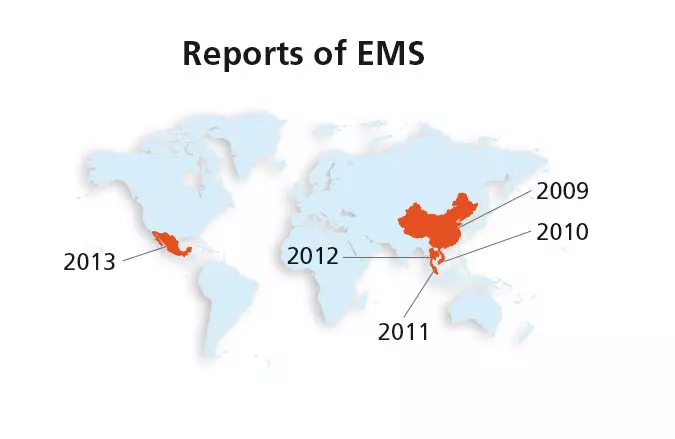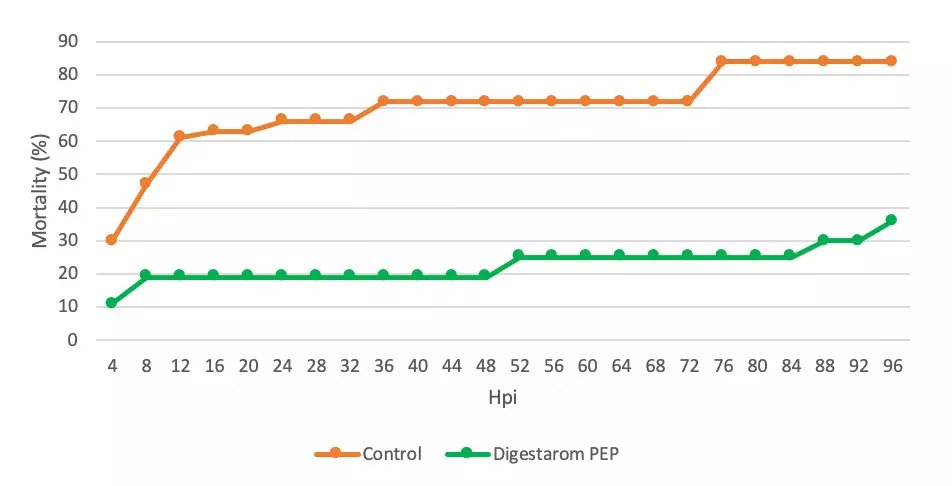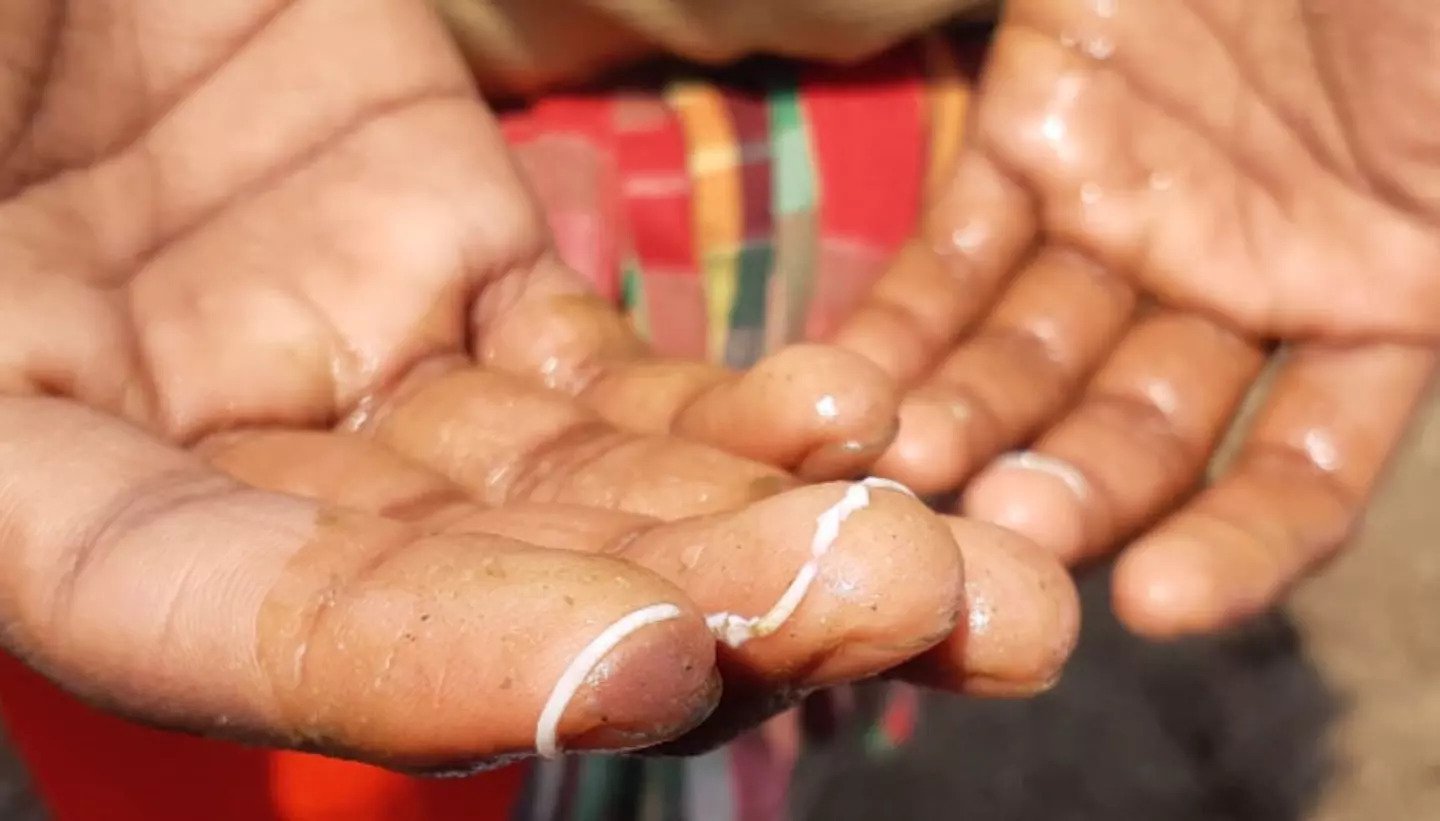After L. vannamei was introduced to Asia, shrimp production increased significantly. L. vannamei became the most important shrimp species in terms of aquaculture production, it is more than 70%. The other important species are Penaaeus monodon, Macrobrachium rossenbergii, P. chinensis, P. merguiensis, P. japonicas, and P. indicus.
The increase in shrimp production has resulted by intensification of production, which is directly linked with an increased incidence of diseases.
Diseases in particular are a major constraint for the sustainability of shrimp production in many countries.
Causes of infectious diseases include:
- Viruses
- Bacteria
- Fungi
- Parasites
Biological factors such as microbial flora present in the pond and pond water quality play a role on the susceptibility of shrimp to pathogens.
Viral diseases
Viruses are considered to be the most important pathogens in shrimp. Different life stages of shrimp may be susceptible to certain viral infections causing mortality, slow growth and deformations. More than 20 viruses have been reported as pathogenic to shrimp. Table 1 gives an overview of the most important viral diseases. White spot disease caused by white spot syndrome virus (WSSV) is major disease in shrimp farming.
Table 1. Viral pathogens of penaeid shrimp – DNA Virus
| Nimaviridae | White spot syndrome virus (WSSV) |
|---|---|
| Parvoviridae |
Infectious hypodermal and hematopoeitic necrosis virus (IHHNV) Hepatopancreatic parvovirus (HPV) Spawner-isolated mortality virus (SMV) Lymphoidal parvo-like virus (LPV) |
| Baculoviridae |
Baculovirus penaei (BP) Monodon baculovirus (MBV) Baculovirus midgut gland necrosis virus (BMNV) Type C baculovirus of Penaeus monodon |
| Iridoviridae |
Shrimp iridovirus (IRIDO) Shrimp hemocyte iridescent virus (SHIV) |
Table 2. Viral pathogens of penaeid shrimp – RNA Virus
| Nimaviridae | White spot syndrome virus (WSSV) |
| Parvoviridae |
Infectious hypodermal and hematopoeitic necrosis virus (IHHNV) Hepatopancreatic parvovirus (HPV) Spawner-isolated mortality virus (SMV) Lymphoidal parvo-like virus (LPV) |
| Baculoviridae |
Baculovirus penaei (BP) Monodon baculovirus (MBV) Baculovirus midgut gland necrosis virus (BMNV) Type C baculovirus of Penaeus monodon |
| Iridoviridae |
Shrimp iridovirus (IRIDO) Shrimp hemocyte iridescent virus (SHIV) |
Bacterial diseases
Bacteria involved in shrimp disease can be pathogenic or opportunistic. Under unfavorable environmental circumstances for shrimp, opportunistic bacteria may cause disease. Bacterial infections in shrimp may cause mortality, cuticular lesions, necrosis, opacity of muscle, discoloration of gills, slow growth, loose cuticle, white gut, lethargia and reduced feed uptake.
Major bacterial diseases in shrimp (Lightner, 1996, Horowitz and Horowitz, 2001; Nunan et al., 2005; Jayasree et al., 2006) are:
- Vibriosis
- Filamentous bacterial disease
- Necrotizing hepatopancreatitis
- Mycobacteriosis
- Chitinolytic bacterial shell disease
- Rickettsial infection
Vibriosis is caused by Vibrio alginolyticus, V. anguillarum, V. campbelli, V. damsela, V. harveyi, V. parahaemolyticus, V. penaeicida, V. vulnificus, V. nereis, V. tubiashi, V. fluvialis, V. splendidus, V. nigripulchritudo.
Fungal diseases
Fungal infections may also cause disease mainly in larval stages of shrimp in hatcheries. The major pathogenic species (Lightner, 1996; Alday and Felgel, 1999) are:
- Lagenidium callinectes
- L. marina
- Sirolpidium spp.
- Phythium spp.
- Leptolegnia marina
- Haliphthoros milfordensis
- Fusarium solani
- F. moniliformae
- F. incarnatum
Black-gill disease was well established as a fungal disease caused by Fusarium sp., Yang et al. (1992) reported it as an epizootic syndrome with multiple etiology. Bacteriological isolation made from the penaeid shrimps infected with epizootic black-gill and brown-spot of shell disease syndrome showed V. pelagicus and V. alginolyticus the major isolates.
Hepatopancreatic microsporidiosis in Litopenaeus vannamei and Penaeus monodon is caused by the newly emerged pathogen Enterocytozoon hepatopenaei (EHP). In scientific classification, EHP is part of Kingdom Fungi.
Parasitic diseases
Several diseases cause by parasite are:
- Cotton shrimp
- Gregarine disease
- Black gill/ brown gill disease
Black gill disease is associated with protozoa Zoothamnium, Epistylis, Vorticella together with Fusarium fungus and bacteria. Gregarine disease is caused by annelid worm Nematopsis spp. And the causative agent of cottomn shrimp is Agmasoma sp.
Nowadays, there are several major disease in shrimp farming such as white spot disease, acute hepatopancreatic necrosis disease and white feces disease.
White spot disease (WSD)
White spot disease (WSD) caused by white spot syndrome virus (WSSV) is still the most serious viral threat in shrimp farming both L. vannamei and P. monodon. WSSV is pathogenic to at least 78 species, mainly to decapod crustaceans including marine and freshwater shrimp, crab, crayfish and lobsters (Lightner, 1996; Flegel, 2006). Outbreak of WSD reported in many countries until now like India, Thailand, Indonesia, Vietnam and other countries.
Co-infection of WSSV and Vibrio can cause higher and faster mortality (Phuoc et al., 2009). Natural outbreaks of WSSV are categorized into peracute, acute to subacute and chronic forms, where mortality occurs within 2-3 days, 7-10 days and 15-28 days, respectively (Sudha et al., 1998).
Applying good biosecurity system is one major factor for successful on managing WSD. Also avoiding stocking in rainy season for farm which located in WSSV endemic area. WSD outbreak mostly happen during rainy season.
Acute hepatopancreatic necrosis disease (AHPND)
AHPND also known as early mortality syndrome (EMS) is shrimp disease that has attacked the shrimp farms. It was named as EMS due to mass mortality during few days after shrimp post larvae stoking, especially within 20–30 days. This disease had caused mass mortality in China (2009) as first time and then in Vietnam (2010), afterward in Malaysia (2011) and finally in Thailand (2012), Figure 1.

The causative agent of AHPND has been reported a bacterium V. parahaemolyticus (De Schryver et al., 2014). Following that report, some study had been conducted to find solution for AHPND, particularly to control the V. parahaemolyticus.
According to the analysis from BIOMIN Research Center, certain probiotic species seems to be better than others in inhibiting the growth of the pathogenic V. parahaemolyticus. Probiotic strains such as Pediococcus acidilactici, Enterococcus faecium, and Lactobacillus reuteri were shown to inhibit V. parahaemolyticus.
Essential oil mixtures and organic acid mixtures have been shown effective for their inhibitory potential towards V. parahaemolyticus. These compounds can be added to the feed to have an effect in the digestive system of the animal.
An in vivo test results showed that shrimp fed essential oil (Digestarom® P.E.P. MGE) had increased resistance against V. parahaemolyticus in comparison with the Control (Figure 2). Compared to the Control group, mortality of shrimp fed Digestarom® P.E.P. MGE was stabilized on a level around 20 %, while mortality rapidly increased in the Control group. This indicates that the phytogenic has considerable potential to increase shrimp resistance against pathogen bacteria.

* Indicates a significant difference between treatments (P < 0.05); injection of 0.2 ml V. parahaemolyticus of 5×107 ind/ml to 24 shrimp
However, a more holistic approach to fight the menace both in the pond and within the animal’s digestive system is needed. Effective solutions must integrate many variables. The holistic approach are using post larvae (SPF: specific pathogen free), applying good biosecurity, managing water quality, and also managing gut health as well as hepatopancreas health.
White feces disease (WFD)

WFD is associated to several pathogen including Vibrio. Somboon et al. (2012) reported seven species of Vibrio were isolated from WFD shrimp (L. vannamei) in the study. These species were V. vulnificus, V. fluvialis, V. parahaemolyticus, V. alginolyticus, V damselae (Photobacterium damselae), V. mimicus and V. cholera (non01). Total Vibrio Count (TVC) when hit by WFD was increased 900% in shrimp intestine and hepatopancreas compared to non WFD infected. WFD also associated with EHP (Tran, 2019).
Gross signs of WFD in shrimp cultivation ponds (Figure 3) included white to somewhat yellow, floating fecal strings.
Sriurairatana et al. (2014) reported that the white fecal string is the aggregated transformed microvilli (ATM), when the occurrence of ATM is severe, it can lead to the formation of white fecal strings in shrimp, and if many shrimp in the same pond exhibit this phenomenon, it can lead to floating fecal strings that sometimes accumulate in floating (white feces syndrome). This usually occurs from 2 months of cultivation onwards, and it may be accompanied by high shrimp mortality and slow growth.
References
Alday de Graindorge, V. and Flegel, T.W., 1999. Diagnosis of shrimp diseases with emphasis on the black tiger shrimp (Penaeus monodon). Multimedia Asia Co. Ltd. Bangkok 10400, Thailand.
De Schryver, P., Defoirdt, T. and Sorgeloos, P. 2014. Early mortality syndrome outbreaks: a microbial management Issue in shrimp farming? PLoS Pathog. 10(4): e1003919.
Flegel, T.W., 2006. Detection of major penaeid shrimp viruses in Asia, a historical perspective with emphasis on Thailand. Aquaculture 258, 1-33.
Horowitz, A., Horowitz, S., 2001. Disease control in shrimp aquaculture from a microbial ecology perspective. In: Browdy, C.L. and Jory, D.E., editors. Proceedings of the special session on sustainable shrimp culture, Aquaculture 2001. The World Aquaculture Society, Baton Rouge, Louisiana, USA, 199-218 pp.
Jayasree, L., Janakiram, P. and Madhavi, R. 2006. Characterization of Vibrio spp. Associated with diseased shrimp from culture ponds of Andhra Pradesh (India). Journal of the World Aquaculture Society, Volume 37 Issue 4 Page 523.
Lightner, D.V., 1996. A hand book of shrimp pathology and diagnostic procedures for diseases of penaeid shrimp. World Aquaculture Society, Baton Rouge, LA, USA, 304 p.
Nunan, L.M., Lightner, D.V., Oduori, M.A., Gasparich, G.E., 2005. Spiroplasma penaei sp nov., associated with mortalities in Penaeus vannamei, Pacific white shrimp. Int. J. Syst. Evol. Microbiol. 55: 2317-2322
Phuoc, L.H., Corteel, M., Nauwynck, H.J., Pensaert, M.B., Alday-Sanz, V., Van den Broeck, W., Sorgeloos, P. and Bossier, P. 2009. Effect of dose and challenge route of Vibrio spp. on co-infection with white spot syndrome virus in Penaeus vannamei. Aquaculture (290): 61-68.
Somboon, M., Purivirojkul, W., Limsuwan, C., Chuchird, N. 2012. Effect of Vibrio spp. in white feces infected shrimp in Chanthaburi, Thailand. Kasetsart University Fisheries Research Bulletin. Vol. 36 (1). Pp 7-15.
Sriurairatana, S., Boonyawiwat, V., Gangnonngiw, W., Laosutthipong, C., Hiranchan, J., Flegel, T.W. 2014. White feces syndrome of shrimp arises from transformation, sloughing and aggregation of hepatopancreatic microvilli into vermiform bodies superficially resembling gregarines. Plos One, Vol. 9 (6): e99170.
Sudha, P.M., Mohan, C.V., Shankar, K.M., Hegde, A., 1998. Relationship between white spot syndrome virus infection and clinical manifestation in Indian cultured penaeid shrimp. Aquaculture 167, 95-101.
Tran, L. 2019. Lessons learned from the emergence of AHPND, EHP, and White Feces Disease. OIE Conference, Santiago Chile.
Yang, J., Wu, Y. and Zhu, X. 199a. Pathogenetic biology studies on black gill and brown spot of shell disease syndrome of penaeid shrimp infected by bacteria. Donghai Mar. Sci. 10(4): 27-36.
Source: https://www.biomin.net/species/aquaculture/shrimp-diseases/

 Tiếng Việt
Tiếng Việt Indonesia
Indonesia